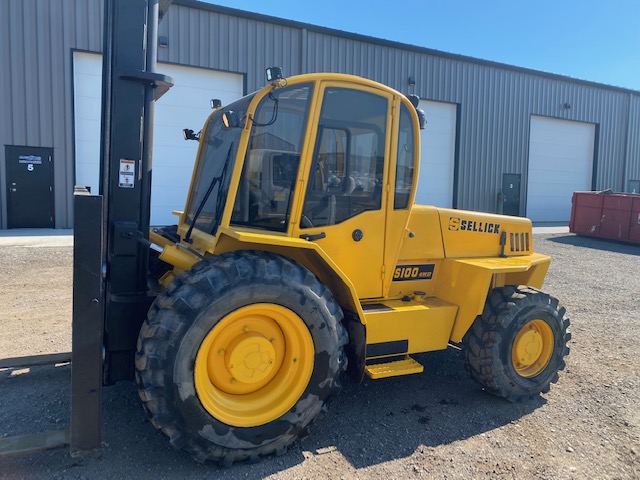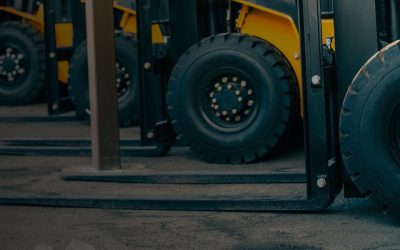For more than 50 years, the Sellick brand has been synonymous with grit, power, and endurance. Sellick rough terrain forklifts are built to carry large loads and handle rough terrain in a variety of challenging conditions. But even the best machines need service sometimes, and these vehicles are no exception. When something goes wrong with your Sellick outdoor lift, you need to be ready to give it the attention it deserves so you can get back to work.
With more than three decades of forklift repair under our tool belts, the team at HardCo knows all about Sellick outdoor forklifts and the most common challenges their owners face. Below, you’ll find a detailed explanation of the repairs we perform on these lifts most often, so that you know what to keep an eye out for in the future. If you start to suspect that your lift may be experiencing any of these issues, contact us for help ASAP!

Transmission Replacements
By their very nature, transmissions are subject to a fair amount of abuse during use, and the reality is they just don’t last forever. That’s why it’s vital to check your transmission fluid often—which is especially important for hydrostatic transmissions like the ones in Sellick’s popular SLP Series. Extreme temperatures caused by environmental conditions can sometimes wreak havoc with these systems by affecting the pressure of their hydraulic fluid.
In machines with hydrodynamic transmissions, problems are more likely to be related to damaged seals and clogged lines than with the pressure of the hydraulic fluid itself. But no matter what kind of transmission your lift has, make sure to have it inspected and serviced every 2500 hours or according to the milestones in your owner’s manual—whichever come first. Each transmission service should also include oil and a filter.
Not servicing your transmission when necessary can lead to massive expenses—over $20,000 to repair or replace a damaged transmission in some cases. Routine maintenance and inspection is the best way to prevent these failures and the costs that come with them.
Steering Links
Forklifts use steering links to facilitate power steering by connecting the steering wheel to the steering knuckles on the rear axle through a series of other parts. However, the large tires on most Sellick outdoor lifts can take a toll on steering links, especially in rough yards or when going over bumps under heavy loads. Worn linkage can prevent your lift from being able to turn tightly by causing one wheel to drift.
Most wear and tear on steering links is predictable—in fact, you should be able to prevent it effectively if you’re following the guidelines in your owner’s manual for routine maintenance and inspection. It’s only when you neglect to have this work done on your forklift that the threat of worn out steering links is likely to become a liability.
Engine Coolant Leaks
The engine in your Sellick outdoor lift will go through hot and cold cycles as part of its regular use, but this causes expansions and contractions that can eventually cause the coolant hose clamps to loosen and fall off. Engines can also overheat due to low coolant levels, which can be a quick route to complete engine failure.
Replacing or repairing a failed engine can cost over $34,000. Instead of paying that much for major work, it’s easier and cheaper to just replace consumable parts like air and oil filters, engine oil, coolant, and belts as part of regular service.
Driveshaft U-Joints
These components are essential for transferring engine torque to the drive axles of your forklift—but they need to remain properly lubricated.
If the U-joint isn’t working properly, the drive shaft won’t be able to move with the suspension while rotating, and you’ll likely hear an unpleasant clunking sound. These sounds will usually be loudest when your lift is accelerating from a stop, turning a corner, using 4WD, or driving under load.

Chains, Rollers, Bearings, & Bushings
These components are essential for transferring engine torque to the drive axles of your forklift—but they need to remain properly lubricated.
If the U-joint isn’t working properly, the drive shaft won’t be able to move with the suspension while rotating, and you’ll likely hear an unpleasant clunking sound. These sounds will usually be loudest when your lift is accelerating from a stop, turning a corner, using 4WD, or driving under load.
Service Saves Sellick Outdoor Lifts
In case you haven’t spotted the trend yet, here it is: spending some money on routine maintenance and inspection will prevent you from having to replace costly parts and entire systems on your Sellick outdoor lift in the future. Keep an eye (and an ear) out for the problems we’ve described above, and be sure to contact us whenever you suspect you may need help taking care of your investment.




